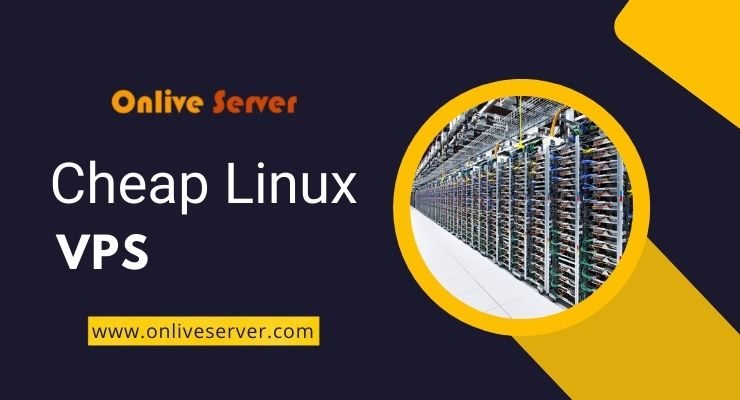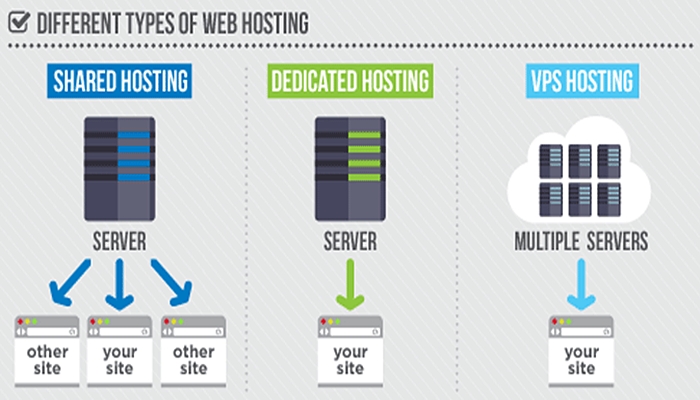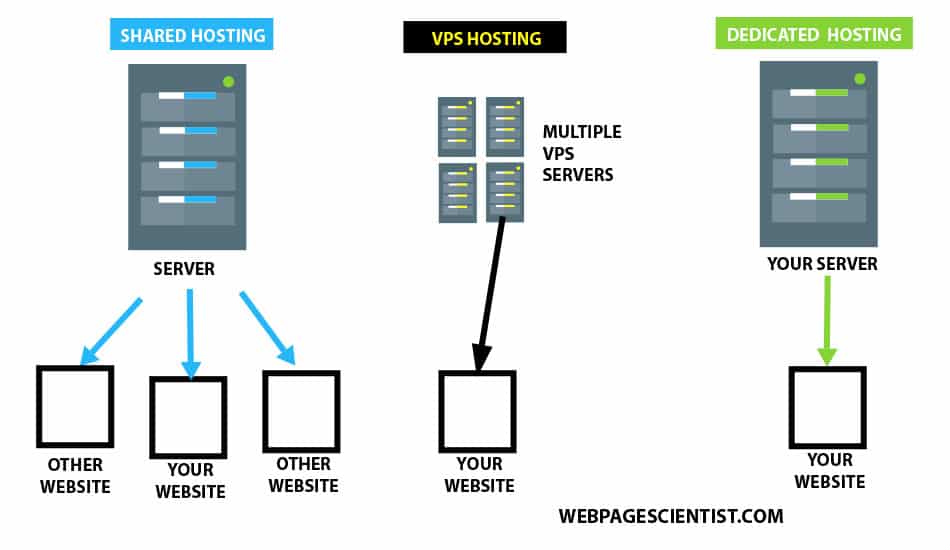Cheap Linux servers provide an affordable and versatile platform for hosting websites, running applications, and experimenting with various projects. This guide explores the world of cheap Linux servers, examining their different types, costs, and benefits.
From understanding the nuances of server costs and resource allocation to navigating the complexities of server deployment and management, this guide aims to empower readers with the knowledge and tools necessary to make informed decisions about choosing the right cheap Linux server for their needs.
Defining “Cheap” and “Linux Server”

When considering a “cheap” Linux server, it’s essential to understand the different aspects of cost involved and the various types of servers available.
Defining “Cheap” in the Context of Server Costs
The cost of a Linux server can vary greatly depending on the chosen configuration and provider. It’s important to consider both upfront costs and ongoing monthly fees, as well as potential hidden expenses.
- Upfront Costs: These include the initial purchase price of hardware or the setup fees for cloud-based servers. Dedicated servers often involve higher upfront costs, while cloud servers may have lower upfront costs but higher ongoing monthly fees.
- Monthly Fees: These are recurring costs associated with running the server, including server rental, bandwidth usage, storage space, and other services. These fees can vary significantly depending on the server’s resources and the provider’s pricing model.
- Hidden Expenses: These can include costs for software licenses, security measures, backups, monitoring tools, and technical support. It’s crucial to factor in these expenses when determining the overall cost of a Linux server.
Types of Linux Servers
Different types of Linux servers offer varying levels of flexibility, control, and cost. Understanding these differences is crucial for choosing the right server for your needs.
- VPS (Virtual Private Server): A VPS is a virtualized server environment that runs on a shared physical server. VPSs offer more control and resources than shared hosting, but they are typically less powerful and customizable than dedicated servers. VPSs are a good option for websites with moderate traffic and resource requirements.
- Dedicated Servers: A dedicated server is a physical server that is dedicated solely to your use. Dedicated servers offer the highest level of performance, control, and customization, but they also come with the highest upfront costs. Dedicated servers are suitable for websites with high traffic and resource demands, as well as applications requiring a secure and isolated environment.
- Cloud Servers: Cloud servers are virtual servers that run on a network of physical servers. Cloud servers offer scalability, flexibility, and cost-effectiveness, allowing you to adjust resources on demand. They are ideal for businesses with fluctuating traffic or resource needs, and they can be easily scaled up or down as needed.
- Containerized Solutions: Containerized solutions like Docker allow you to package applications and their dependencies into portable units called containers. These containers can be run on any platform with a compatible runtime environment. Containerization offers a lightweight and efficient way to deploy and manage applications, making it a popular choice for microservices architectures and DevOps workflows.
Server Resources and Cost
The cost of a Linux server is directly related to the resources it provides. Here’s a breakdown of key server resources and their impact on cost:
- CPU Cores: The number of CPU cores determines the processing power of the server. More cores allow the server to handle more tasks simultaneously, resulting in better performance. Servers with more cores generally cost more.
- RAM (Random Access Memory): RAM is the server’s short-term memory, used to store data that the CPU needs to access quickly. More RAM allows the server to handle more data and applications simultaneously, improving performance. Servers with more RAM generally cost more.
- Storage Space: Storage space refers to the amount of data that can be stored on the server. More storage space is needed for larger websites, databases, and applications. Servers with more storage space generally cost more.
- Bandwidth: Bandwidth refers to the amount of data that can be transferred to and from the server per unit of time. Higher bandwidth is needed for websites with high traffic and multimedia content. Servers with higher bandwidth generally cost more.
Key Considerations for Choosing a Cheap Linux Server
When choosing a cheap Linux server, several key considerations come into play to ensure you select a provider that aligns with your budget and performance needs. This involves carefully analyzing the pros and cons of different providers, understanding their pricing models, and evaluating server performance metrics to ensure optimal value for your investment.
Popular Cheap Linux Server Providers
Choosing the right provider is crucial for a cost-effective and reliable server experience. Here’s a comparison of popular Linux server providers known for their affordability:
- DigitalOcean: Known for its user-friendly interface and competitive pricing, DigitalOcean offers a wide range of server options, including its popular “Droplets.” It’s a great choice for beginners and those looking for a straightforward setup process. DigitalOcean’s pay-as-you-go pricing model allows you to pay only for the resources you consume, making it ideal for projects with fluctuating resource needs.
- Linode: Similar to DigitalOcean, Linode provides a range of server options at affordable prices. It’s renowned for its high-performance servers and reliable uptime. Linode offers both pay-as-you-go and monthly subscription options, allowing you to choose the pricing structure that best suits your needs.
- Vultr: Vultr stands out for its extensive global network of server locations, offering low latency and high availability. It’s an excellent option for projects requiring a strong global presence or for users seeking servers in specific regions. Vultr also provides pay-as-you-go pricing, making it flexible for various workloads.
- AWS Lightsail: While Amazon Web Services (AWS) is known for its comprehensive cloud platform, Lightsail is its simplified and cost-effective offering. It’s an ideal option for smaller projects or those new to cloud computing. Lightsail offers a range of server options with fixed monthly pricing, making it predictable and budget-friendly.
Pricing Models and Discounts
Understanding the pricing models of different providers is crucial for budgeting and cost optimization. Here’s a breakdown of common pricing models:
- Pay-as-you-go: This model allows you to pay only for the resources you consume, making it ideal for projects with fluctuating resource needs. Providers like DigitalOcean, Linode, and Vultr offer pay-as-you-go options.
- Monthly Subscriptions: With monthly subscriptions, you pay a fixed fee for a specific server configuration. This provides predictability and stability for your budget. Providers like AWS Lightsail offer monthly subscription options.
- Discounts for Longer-Term Commitments: Many providers offer discounts for longer-term commitments, such as annual or multi-year contracts. This can significantly reduce your overall cost if you have a long-term project in mind.
Evaluating Server Performance
While cost is a significant factor, it’s essential to consider server performance metrics to ensure optimal performance for your budget. Key metrics to evaluate include:
- Uptime: Uptime refers to the percentage of time your server is operational and accessible. Aim for providers with a high uptime guarantee, typically above 99.9%.
- Latency: Latency represents the delay between a request and a response from your server. Low latency is crucial for responsive applications and user experiences. Consider server locations close to your target audience to minimize latency.
- Resource Allocation: Ensure your server has sufficient CPU, RAM, and storage resources to handle your workload effectively. Consider the specific requirements of your application or project and choose a server configuration that aligns with your needs.
Common Use Cases for Cheap Linux Servers
A cheap Linux server can be a cost-effective solution for a variety of tasks, from personal projects to small businesses. The flexibility and affordability of these servers make them ideal for various use cases, allowing individuals and organizations to achieve their technical goals without breaking the bank.
Hosting Personal Websites
Hosting a personal website on a cheap Linux server is a popular and practical choice. It offers complete control over the website’s environment, enabling users to customize configurations, install specific software, and manage resources efficiently.
- For example, a personal blog or portfolio website can be hosted on a low-cost server, providing a platform to showcase work and connect with an audience.
- Additionally, individuals can use a cheap Linux server to host their personal websites, enabling them to share information, build online communities, or even run small online businesses.
Running Small Businesses
Cheap Linux servers are suitable for small businesses looking to establish an online presence or manage their operations. They offer a cost-effective alternative to expensive dedicated servers, allowing businesses to run their websites, email servers, and other applications without significant upfront investments.
- For instance, a small e-commerce store can leverage a cheap Linux server to host its online shop, manage customer orders, and process payments securely.
- Similarly, businesses can use these servers to host their internal applications, such as project management tools, CRM systems, or collaboration platforms.
Developing and Testing Web Applications
Cheap Linux servers provide a valuable platform for developers to build, test, and deploy web applications. The ability to configure a custom environment allows developers to experiment with different software stacks, libraries, and frameworks, ensuring compatibility and optimal performance.
- For instance, developers can set up a development environment on a cheap Linux server, allowing them to work on projects collaboratively and deploy applications quickly and efficiently.
- Furthermore, these servers can be used for testing web applications in a realistic production environment, ensuring that the applications function correctly and meet performance requirements before deployment.
Experimenting with Data Science Projects
Cheap Linux servers offer a cost-effective way for data scientists to experiment with their projects. These servers can handle large datasets, run complex algorithms, and support various data analysis tools.
- For example, data scientists can use a cheap Linux server to build machine learning models, analyze data trends, and develop data visualization dashboards.
- The flexibility of these servers allows data scientists to tailor their environments to specific project requirements, enabling them to conduct research, develop prototypes, and deploy data-driven solutions efficiently.
Security Considerations for Cheap Linux Servers

Even though cheap Linux servers are budget-friendly, security should never be an afterthought. Neglecting security can lead to costly consequences, including data breaches, malware infections, and unauthorized access. Implementing robust security measures is crucial to protect your server and the sensitive data it holds.
Essential Security Practices
To ensure the security of your cheap Linux server, implementing essential security practices is vital. These practices form the foundation of a secure environment and minimize the risk of vulnerabilities.
- Install Security Updates Regularly: Regularly installing security updates is essential to patch known vulnerabilities in the operating system and software. These updates address security flaws that could be exploited by attackers. Ignoring updates can leave your server exposed to attacks.
- Configure Firewalls: Firewalls act as a barrier between your server and the outside world, blocking unauthorized access. Configuring a firewall to allow only necessary traffic helps prevent malicious connections and intrusion attempts.
- Implement Strong Password Policies: Strong password policies are crucial for protecting your server’s accounts. This includes enforcing the use of complex passwords, regular password changes, and password complexity requirements.
- Limit User Access: Limiting user access to only what is necessary for their roles is essential. This principle of least privilege minimizes the impact of a compromised account.
- Secure SSH Access: Secure Shell (SSH) is a common protocol for remote access. It is essential to secure SSH access by using strong passwords, enabling two-factor authentication, and limiting access to specific IP addresses.
Security Tools and Services
Security tools and services designed for Linux servers can further enhance your security posture. These tools provide automated protection, monitoring, and analysis capabilities.
- Intrusion Detection Systems (IDS): IDSs monitor network traffic for suspicious activity and alert administrators to potential attacks. They can detect and prevent intrusions by analyzing patterns and anomalies in network traffic.
- Antivirus Software: Antivirus software protects your server from malware, such as viruses, worms, and Trojans. It scans files and processes for malicious code and can prevent infections.
- Vulnerability Scanners: Vulnerability scanners identify security weaknesses in your server’s software and operating system. They can detect known vulnerabilities and provide recommendations for remediation.
Regular Security Audits
Regular security audits are crucial for identifying and addressing vulnerabilities. These audits involve a comprehensive review of your server’s security configuration and practices.
Exploring Alternatives to Traditional Servers
While traditional servers have long been the go-to option for hosting applications and websites, the landscape has evolved significantly in recent years, presenting compelling alternatives that offer enhanced flexibility, scalability, and cost-effectiveness. These alternatives leverage cloud computing and containerization technologies to provide efficient and dynamic solutions for various needs.
Cloud-Based Solutions
Cloud computing has revolutionized the way businesses and individuals approach server infrastructure. Instead of investing in and managing physical servers, cloud providers offer virtualized computing resources that can be accessed on demand. Leading cloud providers like AWS (Amazon Web Services), Google Compute Engine, and Microsoft Azure offer a wide range of services, including virtual machines (VMs), storage, databases, and networking, enabling users to scale their infrastructure up or down as needed.
- Scalability and Flexibility: Cloud solutions provide unparalleled scalability, allowing users to quickly adjust their computing resources based on demand fluctuations. This flexibility is particularly valuable for applications with unpredictable traffic patterns or seasonal spikes in usage.
- Cost-Effectiveness: Cloud providers typically offer pay-as-you-go pricing models, where users only pay for the resources they consume. This can be significantly more cost-effective than traditional servers, especially for applications with intermittent or low usage. Additionally, cloud providers handle the maintenance and management of the underlying infrastructure, reducing operational costs for users.
- Global Reach: Cloud providers have data centers distributed worldwide, enabling users to deploy their applications closer to their target audience, improving performance and latency. This global reach also facilitates disaster recovery and business continuity planning.
Containerization Technologies
Containerization technologies, such as Docker and Kubernetes, have emerged as powerful tools for deploying and managing applications efficiently. Containers provide a lightweight and portable way to package and run applications, isolating them from the underlying operating system and ensuring consistency across different environments.
- Improved Efficiency: Containers streamline the application deployment process, allowing developers to package their applications and dependencies into a single unit that can be easily shared and deployed across different environments. This eliminates the need for complex configuration and reduces the risk of compatibility issues.
- Resource Optimization: Containers are highly efficient in terms of resource utilization, enabling multiple applications to run on a single server without interfering with each other. This allows for increased server density and reduced hardware costs.
- Enhanced Scalability: Container orchestration platforms like Kubernetes automate the deployment, scaling, and management of containers, enabling applications to be scaled up or down automatically based on demand. This ensures high availability and responsiveness to changing workloads.
Comparing Alternatives, Cheap linux server
| Feature | Traditional Servers | Cloud Solutions | Containerized Environments |
|---|---|---|---|
| Cost | Higher upfront investment, but potentially lower ongoing costs | Pay-as-you-go pricing, potentially lower upfront costs, but higher ongoing costs if usage fluctuates | Lower upfront costs, potentially lower ongoing costs due to efficient resource utilization |
| Performance | Can provide high performance with dedicated hardware, but may require significant upfront investment | Performance can vary depending on the cloud provider and service chosen | Can provide high performance with efficient resource allocation, but may require specialized expertise for optimization |
| Management | Requires significant technical expertise for setup, maintenance, and security | Managed services provided by cloud providers, reducing management overhead | Requires expertise in container technologies, but simplifies application deployment and management |
Future Trends in Cheap Linux Server Solutions

The landscape of cheap Linux server solutions is constantly evolving, driven by advancements in technology and the growing demand for affordable, scalable, and secure computing resources. Emerging trends such as serverless computing, edge computing, and the rise of open-source software are shaping the future of this sector, making Linux servers more accessible and powerful than ever before.
Impact of Emerging Technologies
The rise of serverless computing, edge computing, and open-source software is significantly impacting the cost and availability of Linux server resources, making them more accessible to a wider range of users.
Serverless Computing
Serverless computing allows developers to run code without managing servers. This approach eliminates the need for traditional server infrastructure, significantly reducing costs and complexity. Cloud providers such as AWS Lambda, Google Cloud Functions, and Azure Functions offer serverless computing services, allowing users to pay only for the resources they consume.
Edge Computing
Edge computing brings computation and data storage closer to the source of data, reducing latency and improving performance. This approach is particularly beneficial for applications that require real-time processing, such as IoT devices, autonomous vehicles, and streaming services. Edge computing solutions often leverage Linux-based devices, making them a key driver of the growth of cheap Linux server solutions.
Open-Source Software
The open-source software movement has played a significant role in making Linux servers more accessible and affordable. Open-source operating systems, applications, and tools are freely available, eliminating the need for expensive proprietary software licenses. This allows users to build and customize their server solutions without significant upfront costs.
Predictions for the Future
The future of cheap Linux server solutions is bright, with advancements in technology driving increased affordability, scalability, and security.
Increased Affordability
Serverless computing and the rise of open-source software are expected to continue driving down the cost of Linux server solutions. As cloud providers continue to optimize their services and open-source projects mature, users can expect even lower costs and greater accessibility.
Enhanced Scalability
Serverless computing and edge computing offer unparalleled scalability, allowing users to adjust their computing resources on demand. This dynamic scalability enables businesses to handle fluctuating workloads efficiently, reducing costs and improving performance.
Improved Security
Open-source software often benefits from a large community of developers who contribute to security updates and patches. This collaborative approach enhances the security of Linux servers, making them more resilient to cyberattacks.
The future of cheap Linux server solutions is driven by innovation and collaboration, making these powerful and affordable computing resources accessible to everyone.
Final Thoughts
The journey to finding the perfect cheap Linux server begins with a clear understanding of your requirements and budget. By carefully evaluating server types, providers, and security considerations, you can confidently select a solution that balances cost, performance, and security.





